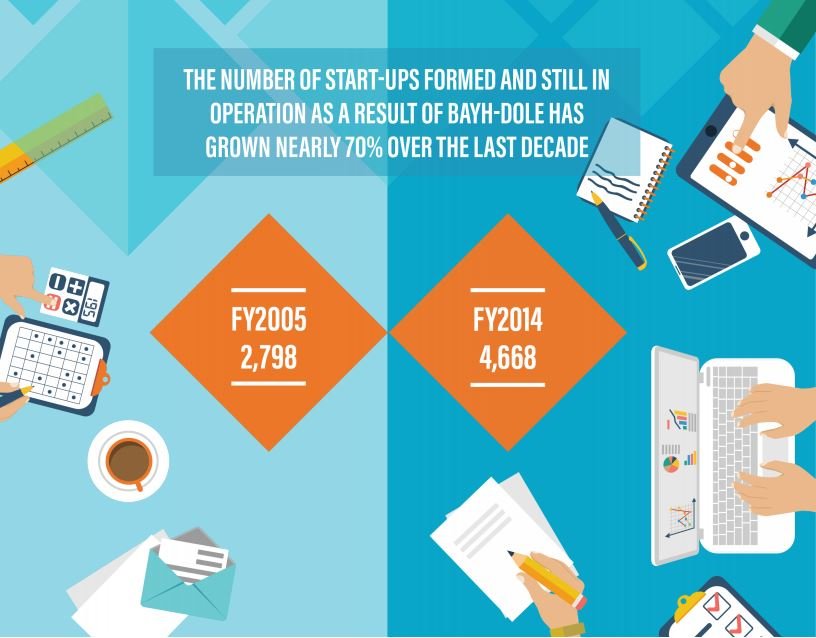The importance of the Bayh-Dole Act
The Bayh-Dole Act provided the R&D infrastructure that has guided new discoveries for over 30 years. Learn more.

The importance of the Bayh-Dole Act.
The Bayh-Dole Act provided the R&D infrastructure that has guided new discoveries for over 30 years. Learn more.

The importance of the Bayh-Dole Act.
Over 35 years ago, leaders in Washington D.C. united in what would today be a strikingly bipartisan manner to pass the University and Small Business Patent Procedures Act of 1980 – better known as the Bayh-Dole Act. The legislation created a framework for technology transfer that helped rejuvenate the American economy and continues to be a model for the rest of the world. A new paper, “How the Bayh-Dole Act Propelled U.S. Global Leadership in the Life Sciences”, focuses on the contributions of the Act in fostering technology transfer.
In the years leading up to the passage of Bayh-Dole, the commercial development of federally-supported research was an area of major concern for both academic and business leaders, as well as policymakers intent on revitalizing U.S. economic growth and competitiveness. Before Bayh-Dole’s passage, commercialization rates of federally-funded research were estimated to be less than 5%. Without clear patent rights and the economic incentive of exclusive licensing, private firms would not devote scarce resources to the highly uncertain development efforts needed to advance research from laboratories receiving public sector funding to the market or the bedside, in the case of medical therapies.
Seeing an opportunity for reform, leaders from both parties came together to enact legislation that would facilitate orderly and efficient technology transfer from universities and other institutions receiving government research funding to the private sector. Bayh-Dole allowed schools and other institutions to own title to the patents arising directly from their research activities and license the rights to the most promising technologies to private sector partners for commercialization.
The Act created a viable route by which new insights and valuable research results from universities and other institutions can make their way efficiently to start-up and established firms. These companies then assume the full risk of development and cost for commercializing the few technologies that eventually prove to be technically and economically viable products. The results have been staggering:
Despite the law’s track record of proven success, today Bayh-Dole is under attack. Petitioners have repeatedly demanded that the National Institutes of Health (NIH) use “march-in rights” – a safeguard originally built into the act that permits additional licenses to the technology, but only under very limited and specified circumstances – to address drug pricing concerns. These petitions are misguided efforts, but more importantly, they threaten to undermine the success achieved under Bayh-Dole over the past 36 years in both fostering early basic research and ensuring the use and translation of those early findings into new medical innovations. In recognition of the vital role that Bayh-Dole has played in fostering innovation, the NIH has declined to use its march-in rights in response to the petitions, including as recently as June of this year.
The far-reaching success of Bayh-Dole should not be put at risk. Today, the law’s technology transfer policy is fundamental to the current, highly successful U.S. biomedical R&D ecosystem and has helped foster the development of innovative therapies that have revolutionized medicine and patients’ lives in cancer and many other disease areas.
Calls for march-in rights to regulate drug prices would create substantial uncertainty for private sector technology development partners and dramatically alter the framework that has contributed to the growth and sustainability of the robust U.S. R&D ecosystem. Instead of looking for ways to destabilize a proven and successful piece of legislation, lawmakers and advocates should instead look to Bayh-Dole as an example of the success that can result from when elected officials work together in a bipartisan and problem-solving manner.